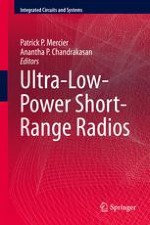2015 | OriginalPaper | Buchkapitel
Channel Modeling for Wireless Body Area Networks
verfasst von : David B. Smith, Leif W. Hanlen
Erschienen in: Ultra-Low-Power Short-Range Radios
Aktivieren Sie unsere intelligente Suche, um passende Fachinhalte oder Patente zu finden.
Wählen Sie Textabschnitte aus um mit Künstlicher Intelligenz passenden Patente zu finden. powered by
Markieren Sie Textabschnitte, um KI-gestützt weitere passende Inhalte zu finden. powered by
